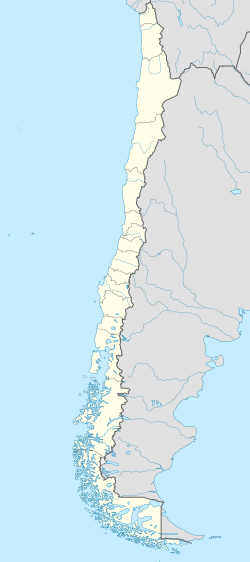Top Qs
Timeline
Chat
Perspective
Coquimbo
City and Commune in Chile From Wikipedia, the free encyclopedia
Remove ads
Coquimbo is a port city, commune and capital of the Elqui Province, located on the Pan-American Highway, in the Coquimbo Region of Chile. Coquimbo is situated in a valley 10 km (6 mi) south of La Serena, with which it forms Greater La Serena with more than 400,000 inhabitants. The commune spans an area around the harbor of 1,429.3 km2 (552 sq mi).[2] The average temperature in the city lies around 14 °C (57 °F), and precipitation is low.


Remove ads
History
The area was originally occupied by indigenous people, who used it as a settlement and for fishing purposes. The natural harbor in Coquimbo was taken over by Pedro de Valdivia from Spain in 1550. In 1879 it was recognized as a town. The city was on the main path of totality of the Solar eclipse of July 2, 2019.
English settlement
Coquimbo was first mentioned in the English speaking world when Charles Darwin visited during his voyage on HMS Beagle, stopping in the town on 14 May 1835 describing the town as "remarkable for nothing but its extreme quietness."[3] Starting in the mid 1800s tens of thousands of Englishmen moved to Coquimbo establishing a distinct English architectural and culinary legacy.[3] English settlement was fueled by the gold and copper industry in the region which peaked in 1860, the same time as the construction of a large English cemetery.[3]
Remove ads
Demographics
According to the 2002 census of the National Statistics Institute, Coquimbo had 163,036 inhabitants (79,428 men and 83,608 women). Of these, 154,316 (94.7%) lived in urban areas and 8,720 (5.3%) in rural areas. The population grew by 32.8% (40,270 persons) between the 1992 and 2002 censuses.[2]
Administration
As a commune, Coquimbo is a fourth-level administrative division of Chile administered by a municipal council, headed by an alcalde who is directly elected every four years. The 2012-2016 alcalde was Cristian Galleguillos Vega.[1]
Within the electoral divisions of Chile, Coquimbo is represented in the Chamber of Deputies by Pedro Velásquez (Ind.) and Matías Walker (PDC) as part of the 8th electoral district, (together with Ovalle and Río Hurtado). The commune is represented in the Senate by Gonzalo Uriarte (UDI) and Jorge Pizarro Soto (PDC), as part of the 4th senatorial constituency (Coquimbo Region).
Economy
The city is an industrial and shipping center. It is growing quickly, registering a 32.8% growth rate from 1992 to 2002. Tourism has started to develop. It is an access point for beach towns to the south, such as Guanaqueros and Tongoy. The port is still important for shipping, especially fruit and copper from mines in the region. Wine is also produced in the area.
Sports
The city has a football team called Coquimbo Unido which plays in the Chilean Primera División B. Their home games are played at the Francisco Sánchez Rumoroso Municipal Stadium, which has a capacity of 17,750 seats. They are nicknamed "Los Piratas", because of the tradition of pirates that arrived to the coasts of Coquimbo. Their biggest rival is Club de Deportes La Serena.
International relations
Twin towns – Sister cities
Coquimbo is twinned with:
Gallery
- Aerial view
- Casino of Coquimbo
- Coquimbo at night
- Coquimbo at night
- Plaza de Coquimbo
See also
References
External links
Wikiwand - on
Seamless Wikipedia browsing. On steroids.
Remove ads














